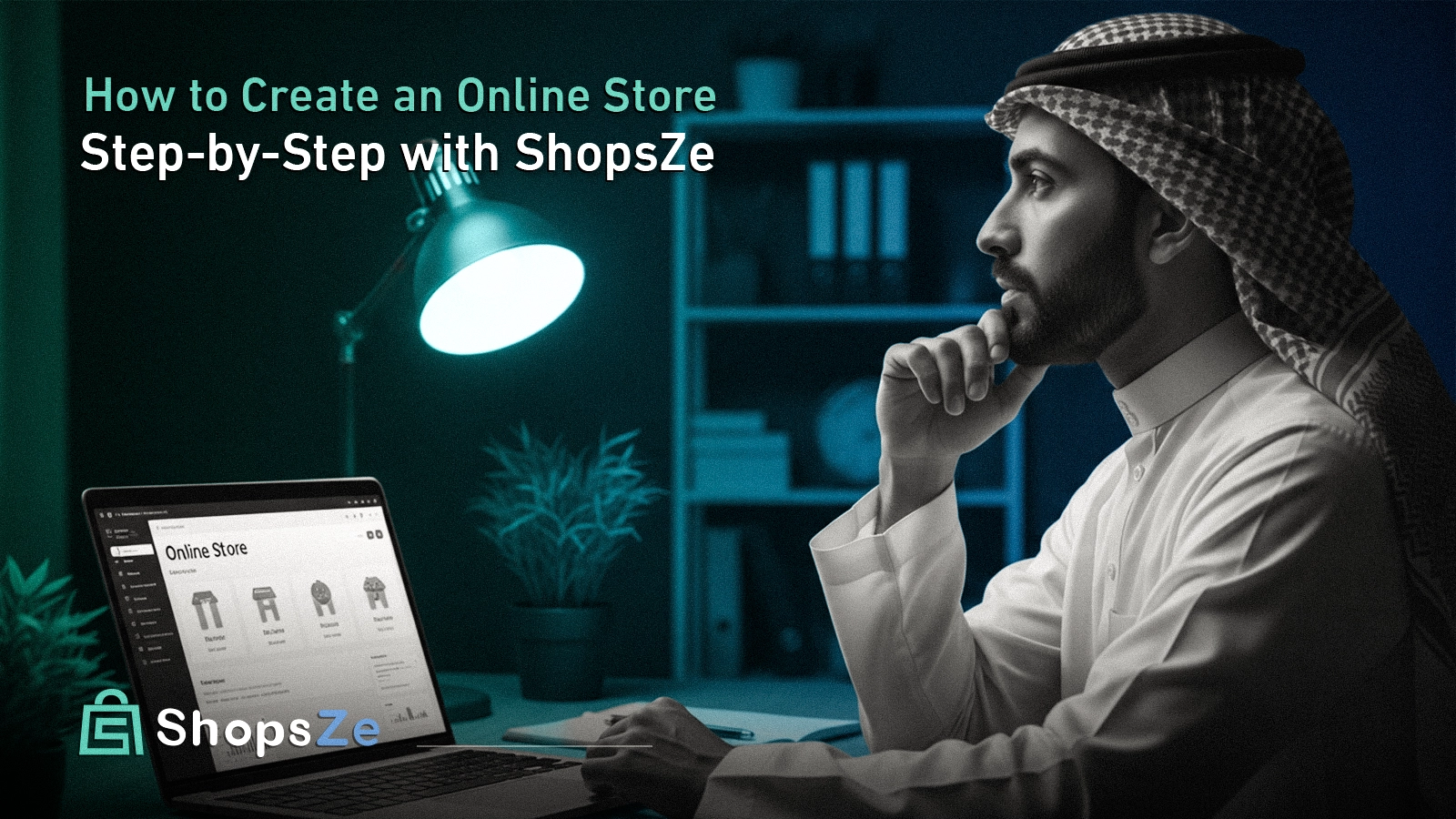In today’s digital age, having an online store is one of the most powerful ways to start or grow a business. Whether you want to sell handmade goods, dropship products, or launch your own brand, learning how to create an online store opens the door to limitless opportunities. This comprehensive guide will walk you through everything you need to know—from choosing a platform to designing your website and going live.
Read more: The best free online store creation site with a smooth user interface
1. Define Your Business and Niche
Before you build your store, you need clarity about what you’re selling and who you’re selling to. Ask yourself:
- What products or services will I offer?
- Who is my target customer?
- What value do I bring to the market?
Choosing a niche is critical for standing out in a crowded online space. The more specific your niche, the easier it is to create messaging that resonates with your audience. For example, instead of launching a general apparel store, you might focus on “vegan, cruelty-free streetwear for Gen Z.” This targeted approach makes it easier to attract loyal customers and compete effectively.
2. Choose the Right Ecommerce Platform

When learning how to build an ecommerce website, one of the first and most crucial decisions is selecting the right platform. The ecommerce platform is the engine behind your store—it manages your inventory, processes payments, hosts your site, and more.
Here are a few popular platforms to consider:
- Shopify – A user-friendly, all-in-one solution that doesn’t require coding knowledge. Ideal for beginners and small businesses.
- WooCommerce – A powerful plugin for WordPress users. Offers great flexibility but requires some technical knowledge.
- BigCommerce – Suited for fast-growing businesses that need scalability.
- Wix/Squarespace – Easy to use with drag-and-drop design features. Best for simple stores with minimal SKUs.
If you’re not tech-savvy and want a fast launch, an all-in-one solution like Shopify or ShopsZe can be the perfect choice.
Read more: The best free online store creation site with a smooth user interface
3. Secure Your Domain Name
A domain name is your store’s address on the web. It should be:
- Short and easy to remember
- Closely tied to your brand name
- Free of confusing symbols or spellings
Use domain name registrars like GoDaddy, Namecheap, or even your ecommerce platform to register your domain. Make sure the name is unique and available on social media platforms too, so your branding is consistent across channels.
4. Design Your Ecommerce Website
Your website’s design plays a huge role in building trust and encouraging purchases. When thinking about how to design an ecommerce website, consider both aesthetics and functionality. A professional design helps reassure customers that your store is legitimate.
Important design elements include:
- Consistent branding: Use a cohesive color palette, fonts, and visual style.
- Clean layout: Keep the interface simple and intuitive.
- High-quality images: Product photos should be clear, well-lit, and show the item from multiple angles.
- Mobile responsiveness: Your store must work well on all screen sizes.
- Easy navigation: Use categories and filters to help users find products quickly.
Use pre-designed templates or hire a professional designer if your budget allows. Platforms like ShopsZe offer customizable themes tailored for different industries.
Read more: Why rely on Shopsze to create the best online stores?
5. Add Your Products
Your product pages are the heart of your ecommerce store. Each listing should be designed to inform and persuade.
Include the following for each product:
- High-quality images (with zoom-in capability)
- Product title that is clear and includes relevant keywords
- Detailed description explaining the benefits, materials, usage, and care instructions
- Pricing and available discounts
- SKU or product ID for inventory management
- Stock availability (e.g., in stock, limited stock)
- Shipping & return information
Great product descriptions and professional photos improve trust and boost conversions.
Read more: Why rely on Shopsze to create the best online stores?
6. Set Up Payments and Shipping
This is a vital step in how to set up an online store. You need a secure and seamless way for customers to pay for their purchases.
Payment gateways you can integrate include:
- PayPal
- Stripe
- Apple Pay
- Google Pay
- Local gateways like STC Pay (for Saudi Arabia)
Also consider:
- Accepting multiple currencies if you’re selling internationally
- Offering different payment options (credit card, debit, digital wallets)
Shipping setup involves:
- Choosing carriers (e.g., DHL, FedEx, Aramex)
- Deciding between free, flat-rate, or real-time shipping costs
- Setting up shipping zones and delivery timelines
- Including tracking for customer orders
Clear shipping policies help reduce cart abandonment and customer complaints.
7. Optimize for SEO and Mobile
A beautifully designed store means nothing if no one finds it. That’s why SEO (Search Engine Optimization) is crucial.
Optimize your ecommerce site by:
- Using keywords like “organic skincare serum” or “custom leather wallet” in product titles and descriptions
- Writing compelling meta titles and descriptions for each page
- Structuring URLs (e.g., yourstore.com/products/leather-wallet)
- Adding alt text to images for better indexing
- Creating a blog to drive organic traffic
Also, ensure your site is mobile-optimized. Over 60% of online purchases happen on smartphones. Test how your site looks on different screen sizes and make adjustments as needed.
8. Test Everything
Before launching, it’s essential to test every aspect of your website.
Run through a customer journey test:
- Add items to cart
- Apply discount codes (if applicable)
- Choose shipping methods
- Process payments using different gateways
- Check confirmation emails and receipts
Also test for:
- Page load speed
- Broken links
- Mobile responsiveness
- Image and button placement
Testing helps you fix any issues and avoid bad first impressions on launch day.
9. Launch Your Online Store
With everything set up, it’s time to go live. Announce your launch to generate excitement and traffic.
Marketing tactics include:
- Announcing the launch on all social media platforms
- Sending out email campaigns to existing contacts
- Running limited-time offers or launch discounts
- Partnering with influencers to promote your products
- Launching ads on Facebook, Instagram, and Google
Prepare for customer inquiries and make sure your support channels (chat, email, phone) are active.
10. Track Performance and Improve Continuously
The real work begins after launch. Use tools like:
- Google Analytics to track visitors, behavior, and sales
- Hotjar or similar tools to see where users click and how they scroll
- Meta Pixel for ad tracking
Monitor:
- Best-selling products
- Pages with high bounce rates
- Cart abandonment rates
- Mobile vs desktop performance
Use this data to improve your site design, product offering, and marketing strategies.
Why Choose ShopsZe to Help Build Your Online Store?

If you’re still asking yourself how to create an ecommerce website without getting lost in the technical side, ShopsZe is your ideal partner. Our platform offers:
- A user-friendly drag-and-drop builder, ideal for beginners
- Professionally designed templates tailored to various industries
- Secure payment gateway integrations including regional options
- Arabic/English bilingual support for reaching wider audiences
- Built-in SEO tools and mobile-optimized themes
With ShopsZe, you don’t just get a website—you get a complete ecommerce solution ready to grow your business.
Turning an Idea Into an Online Empire
Learning how to create an online store isn’t as daunting as it seems when you break it down into clear steps. From planning your products to launching and marketing your store, success in ecommerce is all about strategy, consistency, and the right tools. Whether you’re a creative entrepreneur, a side hustler, or a future mogul, there’s never been a better time to start your digital storefront.
And with partners like ShopsZe, you don’t have to do it alone. You’ll have the design, support, and tools you need to thrive in the world of online selling.


